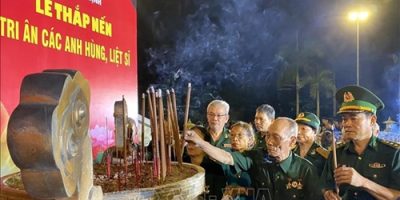As part of its Belt and Road Initiative, China has provided Laos with billions of dollars in loans to develop energy infrastructure and high-speed rail lines in the hopes of bolstering long-term economic growth.
China-funded hydroelectric dams on the Mekong River, and other energy infrastructure, aimed to make Laos the “battery” of Southeast Asia. However, both China-funded projects have yet to see the economic returns Laos had hoped for.
And recent economic data show Laos is facing a mountain of debt, with $13.8 billion in total public and publicly guaranteed debt at the end of 2023, which is over 100% of the tiny country’s GDP.
Loans from China, Laos’ biggest creditor, amounted to half of Laos’ $10.5 billion foreign debt, according to data published in Bloomberg.
Zachary Abuza, a professor at the National War College in Washington who focuses on Southeast Asia, says Laos has a major debt problem.
“It’s not just debt to China. Laos has a crushing amount of debt. Debt in itself is not bad if it is going to productive uses, but Lao debt has not. They have over capacity in hydroelectricity,” he told DW.
“The rail line has been an absolute white elephant, although now with a connection to Bangkok, it should have greater returns. All of that has led to a 30% decline in its currency’s value in 2023 and soaring inflation, which is now the second highest in the region,” he added.
Laos: A country in the grip of the Chinese?
Chinese loans not the only problem for Laos
China has said it’s “doing its best” to help Laos with its debt burden, a Chinese Foreign Ministry spokesperson told Bloomberg.
Laos keeps close ties with China, with which it shares a similar political ideology. The Laos government is run as a Communist one-party state, ruled by the Lao People’s Revolutionary Party.
Beijing has been criticized by experts for its so-called “debt-trap diplomacy” by financing big-ticket projects in developing countries that end up struggling with huge Chinese loans and become economically dependent.
China’s Foreign Ministry frequently this, calling such claims a US-led narrative aiming to deter Beijing’s goals at working with developing nations.
Abuza said the Laotian government must shoulder some of the responsibility for its economic mess.
“China is not all to blame. The blame needs to go to the Laos government that took on too much debt for projects that did not deliver the economic returns that they anticipated,” he said.
The expert added that Chinese loans “are not cheap” and come in at 4% interest, which is high for development projects. He added Japan and the World Bank usually charge under 1%.
“China’s argument is that they are a lender of last resort and assume high political risk. Because most Chinese Belt and Road Initiative loans are through state-owned enterprises or state-owned banks, they are collateralized, which means that should Laos default, they will lose either money parked in Bank of China escrow accounts, or they will lose assets in debt for equity swaps,” he said.
Economic woes affect ordinary Laotians
Overall, Laos’ economy has struggled since the COVID pandemic, with rising inflation, a weak exchange rate against and sluggish GDP growth.
In June, inflation in Laos to over 26% in June 2024, slightly up from May’s reading of 25.7%
The World Bank says Laos’ grew by 3.7% in 2023 with a forecasted 4% in 2024. Prior to the pandemic, growth was 5.5%.
One Laotian, who requested to be anonymous for security concerns, said ordinary people in Laos are starting to feel the burden of economic downturn, with public services, road maintenance, education and health services all lacking.
“Since COVID, many small businesses have been closed, and many have not been reopened. Those who have some land have resorted to growing their own food and going back to a subsistence form of livelihood,” they said.
They added most Laotians do not connect economic woes to debt.
“Most people will not know the scale of the debt, nor will they associate the debt to Chinaas having any direct impact on their lives,” they said. “They will associate their daily challenges with the downturn of the Lao economy which had started since Covid and has continued even after. They experience the rising costs of living.”
Edited by: Wesley Rahn















